A model of the construction of the basilica
|
This model allows us to enter the Gallo-Roman world through our imagination. It is a plausable interpretation of archaeological interpretation itself. We can see the technology available in 100 AD in Nyon, and imagine ourselves at the building site, (adding the sounds and smells for ourselves). |
|
|
Each
mini-scene incorporates archaeological information from Nyon, which
has been coorelated with other findings in the same time-frame in other
parts of the Gallo-Roman world: i.e.,the cart, the groma, the parchament
in the architect's hand, the general appearance of the workmen, etc.
|
The model does not show the things we do not know: how many men worked on the site? How many cranes were errected? How big was the site? How much of the local economy was involved in the project? We can only conjecture... |
l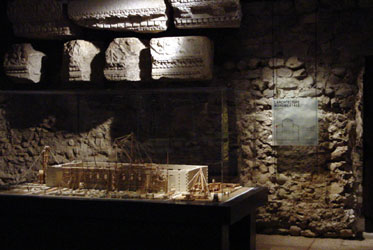 |
A general view of the model, which measures approximately. 2 m x 1 m | 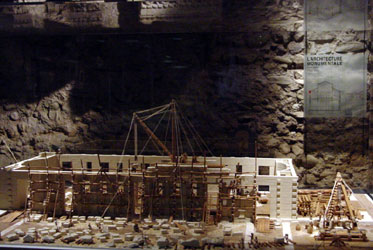 |
||
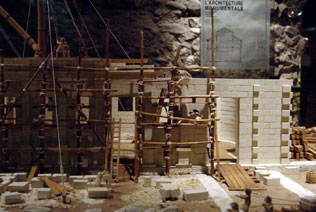 |
This scale model (1:50) of the building of the basilica was made by Hugo Lienhard in 1995, based on the scientific advice of P. André and F. Rossi. Mr. Lienhard worked 800 hours from April to October to create the model, which shows the different groups of workmen and their tools on a Roman construction site. | 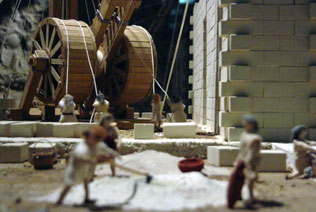 |
||
|
Mixing
concrete
|
||||
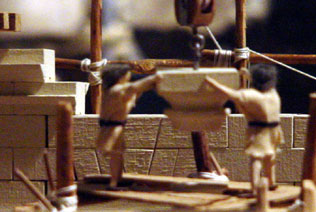 |
Carefully placing a column capitol which has been lifted to the top of the building by the crane. | 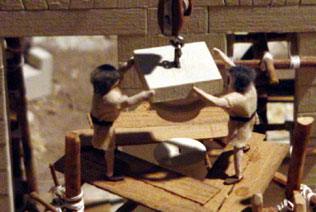 |
||
|
|
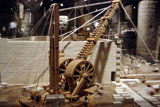 |
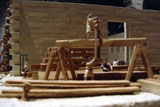 |
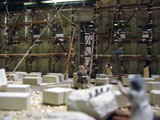 |
|
| click here to see details of the stone yard | click here to see details of the crane | click here to see details of the wood yard | click here to see details of the scaffolding | |
 |
The architect studying the plans for the basilica. His job was more to adapt the proportions of the building to the site, rather than to design the building, which was to follow the classic design used everywhere in the Roman world. He was also Clerk of the Works, responsible for bring the construction to completion within the budget and design specifications. |  |
 |
|
 |
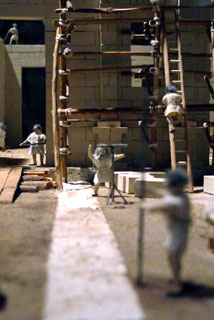 |
At left: A surveyor and his assistant use a groma to check right angles by looking along one of the cross pieces. Click here to learn more about Roman surveying methods. |
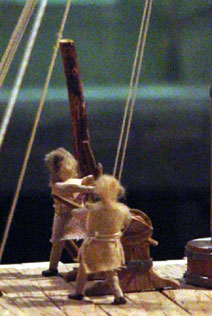 |
|
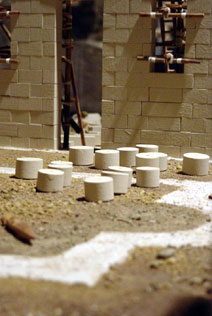 |
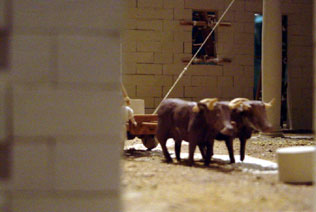 |
Stones were brought from quarries in the Jura. A pair of oxen could haul one 1500 kg stone from the quarry to the construction site in one day. Once the blocks were on site, they were cut to size, and carved if their function were decorative. | 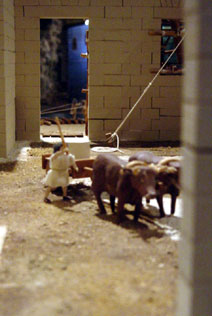 |
|
| Below,
a surveyor stands beside his groma. Click here o learn more about the groma, |
||||
 |
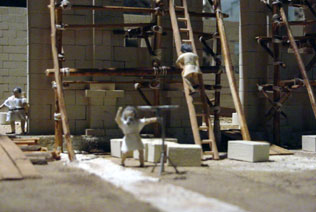 |
|||
|
the
Rhone River
|
This page was updated on 18 March, 2004 by K. Epps
Unless
otherwise mentioned, all photos are by Katharine Epps.
Sauf mention contraire les photos sont de Katharine Epps
nyon@isg-online.org